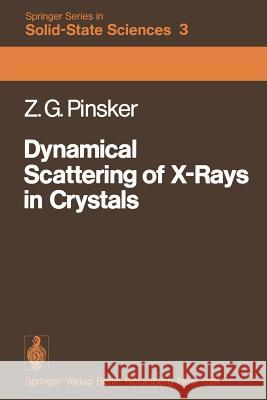Dynamical Scattering of X-Rays in Crystals » książka
Dynamical Scattering of X-Rays in Crystals
ISBN-13: 9783642812095 / Angielski / Miękka / 2012 / 514 str.
(Historical Survey) The discovery of X-ray diffraction in crystals by LAUE, FRIDRICH and KNIPPING in 1912 1.1] served as the starting pOint for the development of scientific research along a number of important lines. We shall discuss just a few of them. The above discovery convincingly demonstrated the wave properties of X-rays. This, together with the previously established electromagnetic nature of radiation, confirmed the hypothesis that X-rays form the short-wave part of the electromagnetic spectrum. Further, this discovery was the first and decisive experimental proof of the periodic structure of crystals. In fact, theoretical crystallography had already arrived at this conclusion, mainly as an outcome of the theory of the space groups of symmetry elaborated by FEDOROV 1.2] and SCHOENFLIES 1.3]. From the optics of visible light we know that the radiation of a wave length of the same order as, and preferably less than, the period of a grat ing suffers diffraction on periodic objects of the type of optical grating. Thus, the discovery proved that the wavelength of an X-ray must be of the order of interatomic distances. It became clear why the visible light of wavelengths exceeding the crystal lattice periods by about 500 to 1000 times failed to reveal the periodic structure of crystals in diffraction experi ments."











